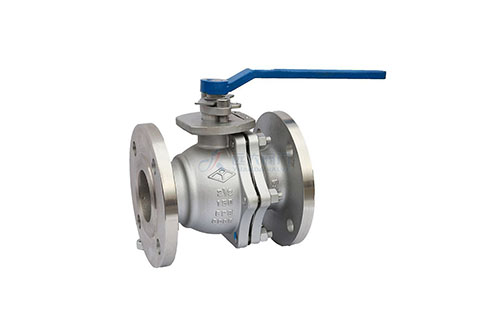Features of Stainless Steel Ball Valve
With the continuous development of stainless steel ball valve technology, it has been widely used in many industries such as petroleum, chemical industry, power generation, papermaking, atomic energy, aviation, and rockets. But at the same time, we also found that many people do not fully understand the characteristics of stainless steel ball valves, which is very detrimental to the correct use of stainless steel ball valves. So, what are the characteristics of stainless steel ball valves?
Cast Iron Ball Valve Manufacturers China has summarized the characteristics of stainless steel ball valves as follows:
1. The fluid resistance is small. The fluid resistance of stainless steel ball valves is very small. According to the statistics, its resistance coefficient is equal to the length of the pipe, which is an important reason why people particularly favor stainless steel ball valves.
2. The structure is very simple. The stainless steel ball valve is generally composed of an electric actuator and a ball valve body, and its connection is by a bracket and a connecting shaft. The structure is very simple and clear, and the volume is small, the weight is relatively light, and the use is very flexible and convenient.

3. Good sealing. We know that the working environment in which stainless steel ball valves are used has very high requirements for tightness. Nowadays, most of the sealing surface materials of stainless steel ball valves on the market are widely used plastics, with good sealing performance, and have been widely used in vacuum systems.
4. Easy to operate. The stainless steel ball valve only needs a 90-degree rotation and a small rotation torque can quickly close tightly. In other words, it only needs to rotate 90 degrees from fully open to fully closed, which is very convenient for remote control.
5. Convenient maintenance. The valve body of the stainless steel ball valve can be integrated or combined, and the overall structure is relatively simple. In addition, the sealing ring is generally movable, which is convenient for disassembly and replacement.
6. Strong reliability. The sealing performance of the stainless steel ball valve is very good. When it is fully open or fully closed, the sealing surface of the ball and the valve seat are isolated from the medium. When the medium passes, it will not cause the erosion of the valve sealing surface. It is reliable Sex is relatively strong.
The Benefits of Stainless Steel Ball Valves
More Corrosion Resistant
Stainless as a material is much more corrosion-resistant than brass. This is an important thing to pay attention to, especially when it comes to valves. Because valves are meant to open and close, corrosion can cause big issues. If there is too much corrosion, this may cause a Ball Valve to break or become unable to move.
Stainless Steel Ball Valves will hold up much better to harsher water types. This will ensure a longer lasting valve.
Remember that if you want to have more corrosion resistance built into your system, you should be using a full stainless system.
Within the Stainless Steel Ball Valve series, there are actually two types of Stainless. 304 and 316. These are two different material grades that have different make-ups. For more corrosion resistance, you can utilize the 316 grade, as it has an element called molybdenum which increases the corrosion resistance even greater than standard 304 Stainless.
Pressure Ratings
Generally speaking, Stainless Steel Ball Valves have higher pressure ratings than brass. For example, a standard brass ball valve might have a Pressure rating of 600 PSI on a 1” model. A standard Stainless Ball Valve would probably have a pressure rating of 1000 PSI on a 1” model.
When you are getting into commercial, industrial or Water Well applications, having the ability to have more pressure going through the valve can be needed. This is where Stainless Ball Valves are already heavily used.
Wider Range of Applications
One of the biggest benefits of stainless is the ability to use it in so many applications. With the competitiveness of stainless steel overall, it has been gaining popularity in more usual plumbing applications. This is in addition to being used in many Industrial and Commercial applications.
The reason why Stainless is becoming more and more popular in conventional plumbing is due to the rise of No-Lead Brass pricing. When the No-Lead laws started coming into effect in many States and Provinces in North America, No-Lead Brass grew in popularity. The price difference between Leaded and No-Lead Brass is quite substantial, which brought it in line, if not a more expensive option to Stainless.
Currently, the price difference between No-Lead Brass and Stainless are very similar, and in some cases, Stainless is actually cheaper. With this being true, the ability to incorporate it into more and more applications is very tangible. The one thing to remember is that working with Stainless is different than Brass, and needs to be sealed in a specific way.
In summary, there are several convenient features of Stainless Steel Ball Valve. Of course, the characteristics of stainless steel ball valves are far more than these, and with the progress of ball valve technology, its advantages will gradually increase. We should continue to learn and master these advantages, which is very helpful for us to use stainless steel ball valves correctly.